Fish On!: Wildlife that excels at fishing as an occupation
Text and photos by Heather Cline
All wildlife must be successful at finding and securing food to survive. For some wildlife, that involves grazing on grasses or gathering seeds and for others, that means hunting. Hunting is risky business. It requires an output of energy and there are no guarantees of success. The hunter may also be injured or killed in pursuit of its prey, making each catch critical. Fishing is a particularly specialized form of hunting. Here are nine species that use fishing technique to secure a meal as part of their survival.
Bald Eagle
|
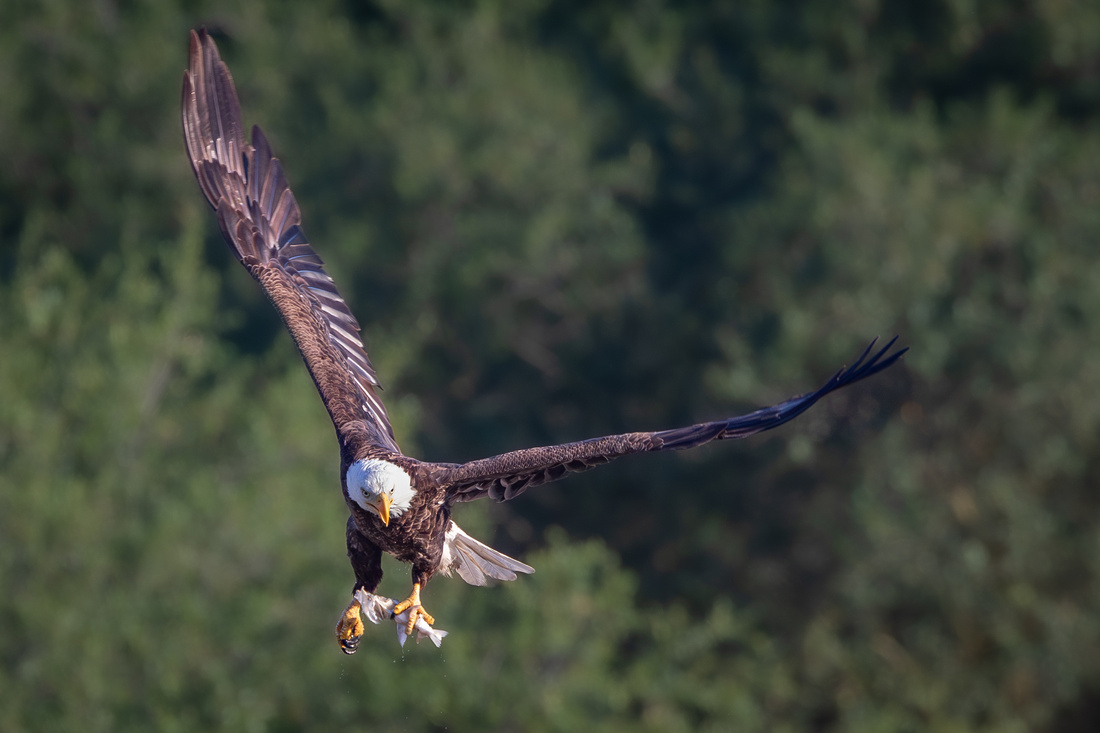 Bald Eagle with fish Bald Eagle with fish
This Bald Eagle showed up on the river near my home one morning, swooping down and swiftly catching what is most likely a trout. They have incredible eyesight that is used to spot fish underneath the surface as they soar above. They dive down and catch fish with their enormous talons. Eagles are also good swimmers. If they misjudge the weight of the fish, they may swim with the fish to shore instead of flying away with it.
Photo Tip: Use a fast shutter speed, such as 1/1250 second to freeze motion and obtain sharp images.
|
Belted Kingfisher
|
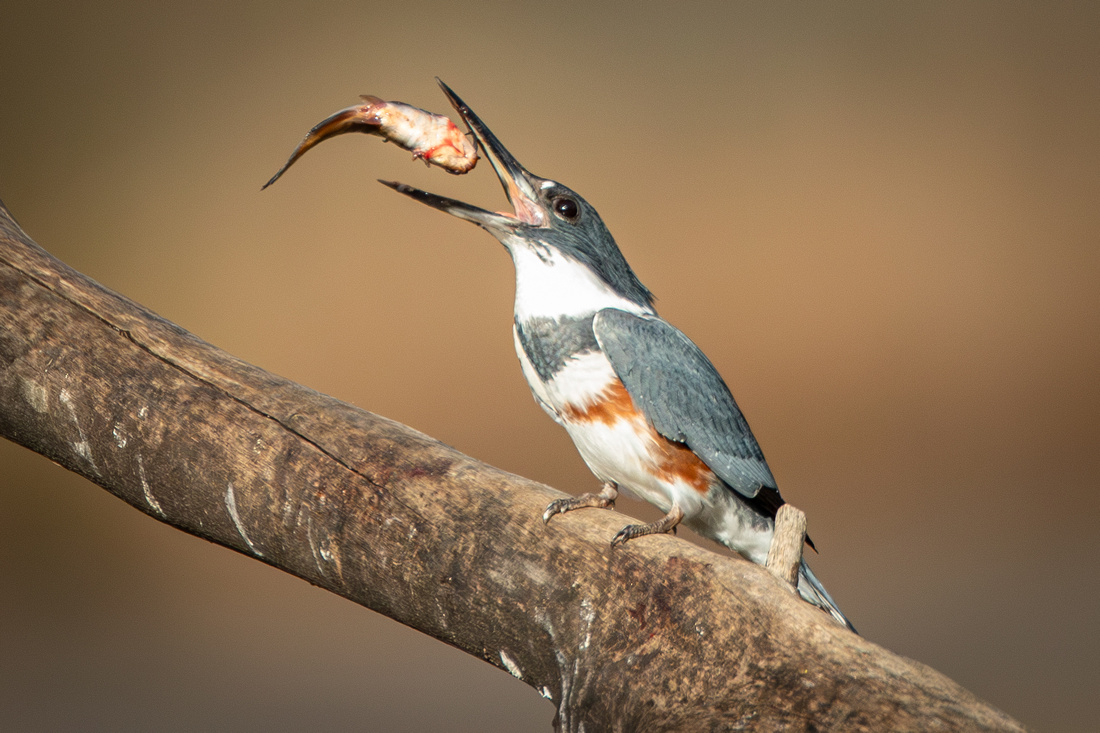 Belted Kingfisher with Fish Belted Kingfisher with Fish
This is a Belted Kingfisher that I was observing in a wildlife refuge. These birds are very skittish, so I used my vehicle as a blind and I still had to wait about an hour for it to land close enough to photograph. These birds are quite the experts at catching fish, diving underwater at lightning speed. Although fish are a common food source, they also hunt crayfish, insects, frogs, snakes, young birds, and small mammals. The most unexpected behavior of this species is their practice of taking their catch back to a perch and pounding it against the limb to subdue it.
Photo Tip: Using a hide, such as a bird blind, some bushes, or your vehicle, will improve your odds of catching these birds exhibiting their unique fishing behavior.
|
Black Bear
|
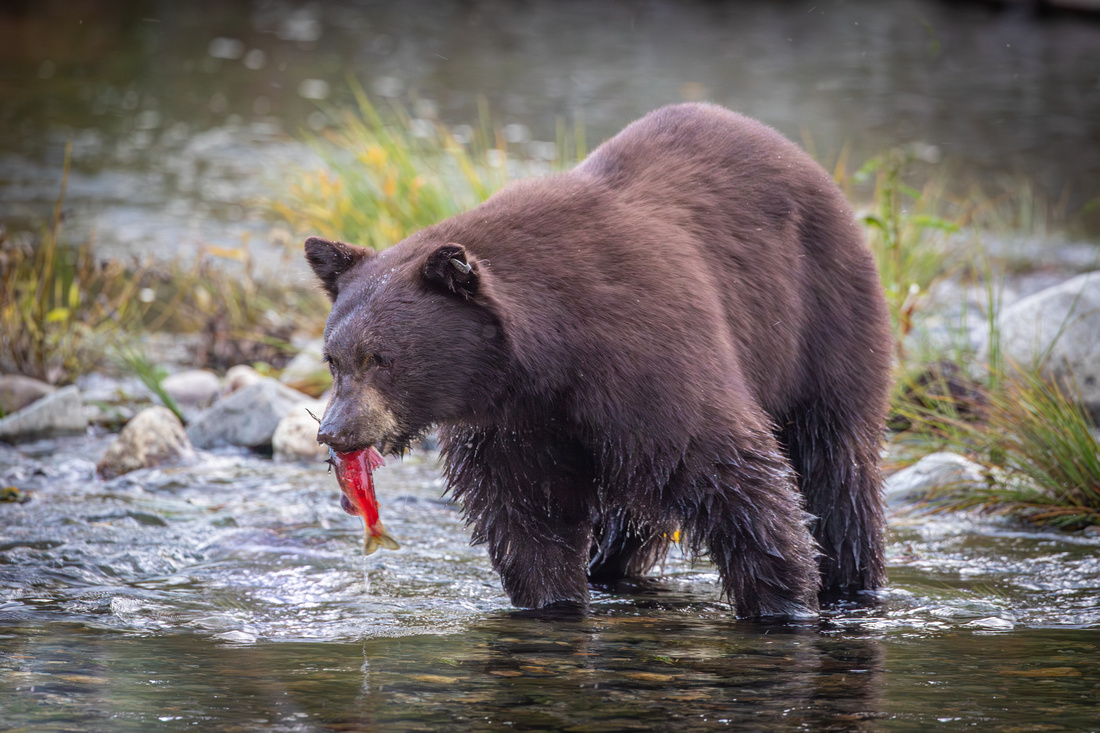 Black Bear with Kokanee Salmon Black Bear with Kokanee Salmon
Black Bears are often thought of as predators, but a large portion of their diet is plant based including nuts, fruits, and berries. In the fall however, the Kokanee Salom run begins and they gather in creeks to spawn, making a natural buffet for bears that are fattening up before winter approaches. This black bear casually caught and ate several fish from this creek before heading back into the woods.
Photo Tip: When bears are fishing, they are constantly moving. Setting your camera to use continuous or servo mode will ensure you are able to maintain focus while the bear is moving towards or away from you.
|
Common Merganser
|
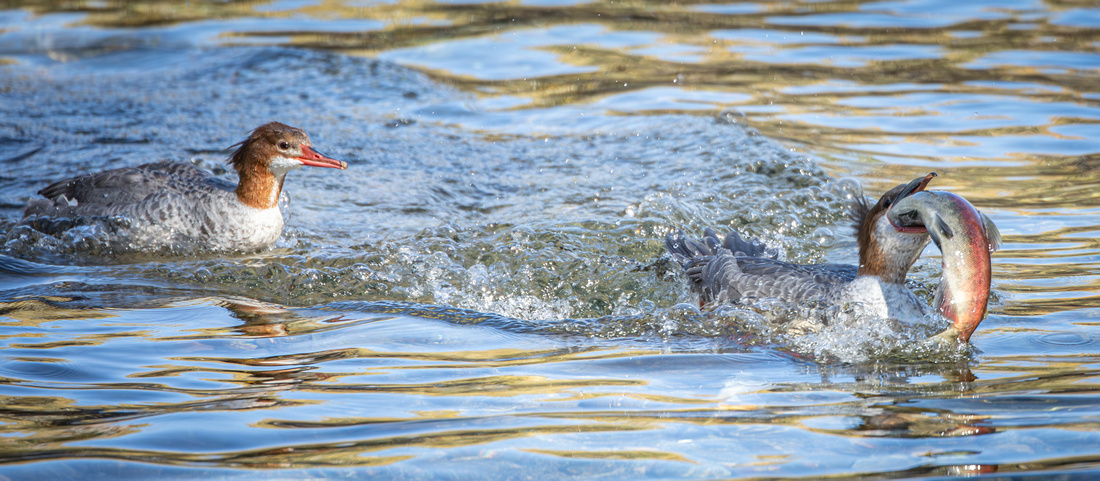 Common Merganser with Kokanee Salmon Common Merganser with Kokanee Salmon
The Common Merganser is anything but common, especially when it comes to catching fish. They dive underwater, often emerging with a fish that looks 'way too large' for the seaduck to consume - and yet they do! The bird has tooth-like serrations along their bill that help them catch and hold on to slippery fish. This Merganser was eating on the run as one of the other residents chased her through the water hoping to steal an easy meal.
Photo Tip: When Mergansers race across the water, they move in and out of light. To ensure proper exposure, try using aperture priority so your camera can make the shutter speed adjustment on the fly.
|
Great Blue Heron
|
 Blue Heron with Kokane Salmon Blue Heron with Kokane Salmon
The Great Blue Heron is an expert fisher and patient hunter. They wade through shallow water slowly stalking their prey, waiting for it to come within close range before they strike. They are the largest heron in the United States, standing over 4 feet tall with striking markings that make them one of the most photogenic bird species. This heron caught a rather large salmon and it struggled for a while before taking it down.
Photo Tip: Studying Blue Heron habitats and hunting behavior will go a long way to being ready to react quickly when they strike their prey.
|
Bobcat
|
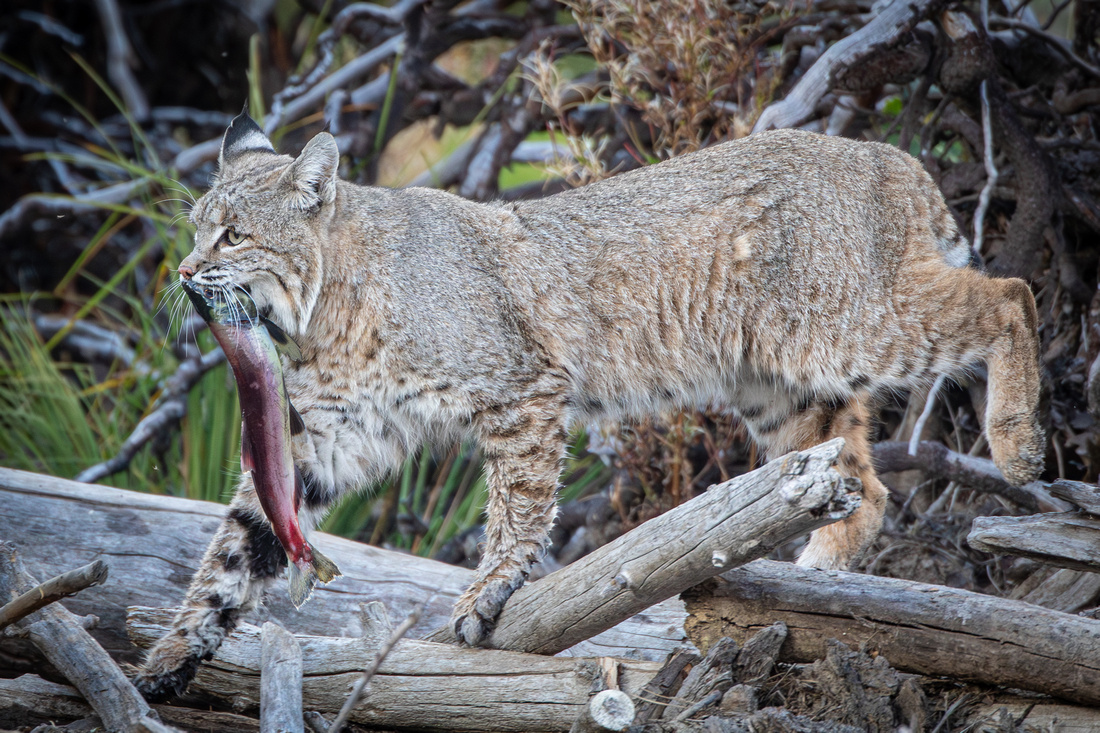 Bobcat with Kokanee Salmon Bobcat with Kokanee Salmon
Bobcats have a varied diet including rabbits, rodents, birds, and sometimes fish. They are solitary animals and are difficult to spot in the wild, typically hunting away from humans at dawn and dusk. This bobcat appearance was quite a surprise - and when it grabbed a fish out of a creek and walked it past us with pride - it was like he was an actor who was giving a start performance on cue!
Photo Tip: Bobcats tend to be more active in the daylight hours between September and March so if you are keen on capturing a bobcat, you might have the best luck during these months.
|
Osprey
|
 Osprey with fish Osprey with fish
The Osprey, also known as a "fish Hawk" is a raptor with remarkable fishing abilities. They observe their prey while hovering above then dive headfirst into the water capturing fish up to 2 pounds, which is about half their own weight. They have reversable outer toes that allow them to firmly grip their prey as they retrieve it from the water. This Osprey frequented the river near my home for about a week, catching fish at roughly the same spot and time each day. It was an exciting week for me!
Photo Tip: When Ospreys go into hunting mode, they move fast! Setting your camera to use continuous shooting or burst mode will improve your chances of getting just the right image.
|
River Otter
|
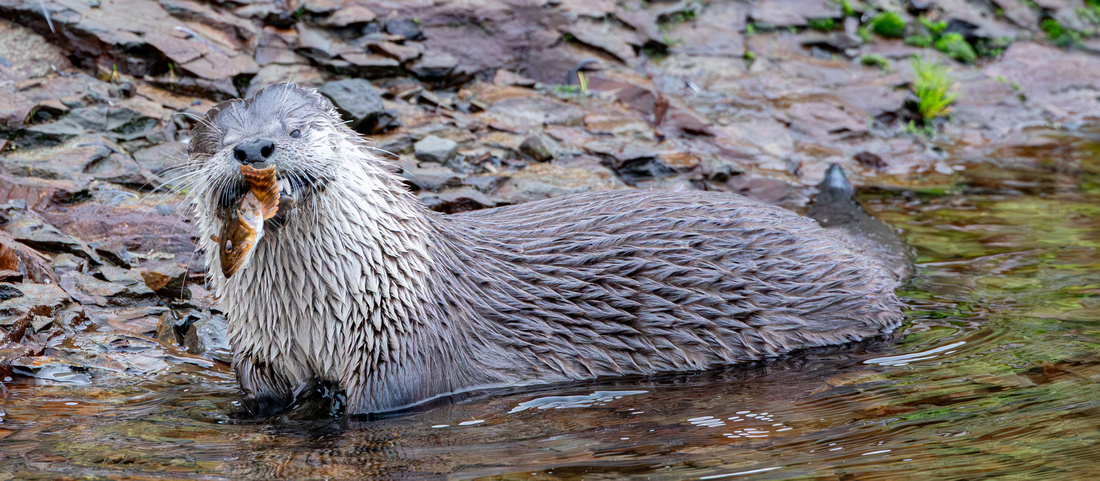 River Otter with fish River Otter with fish
This is a River Otter with what I believe is a prickly sculpin, a fish commonly found in brackish tidewater areas. North American River Otters have long whiskers that they use to detect prey and clawed feet that they use to grab ahold of their catch. They are built for fishing with the ability to move quickly and make sharp turns underwater, helping them to successfully catch fish. This one appears to be smiling about his prize.
Photo Tip: Otters have extremely good sense of smell and hearing. If possible, stand down wind of them so they do not catch your scent and if you have a mirrorless camera, enjoy the benefits of a silent shutter.
|
Snowy Egret
|
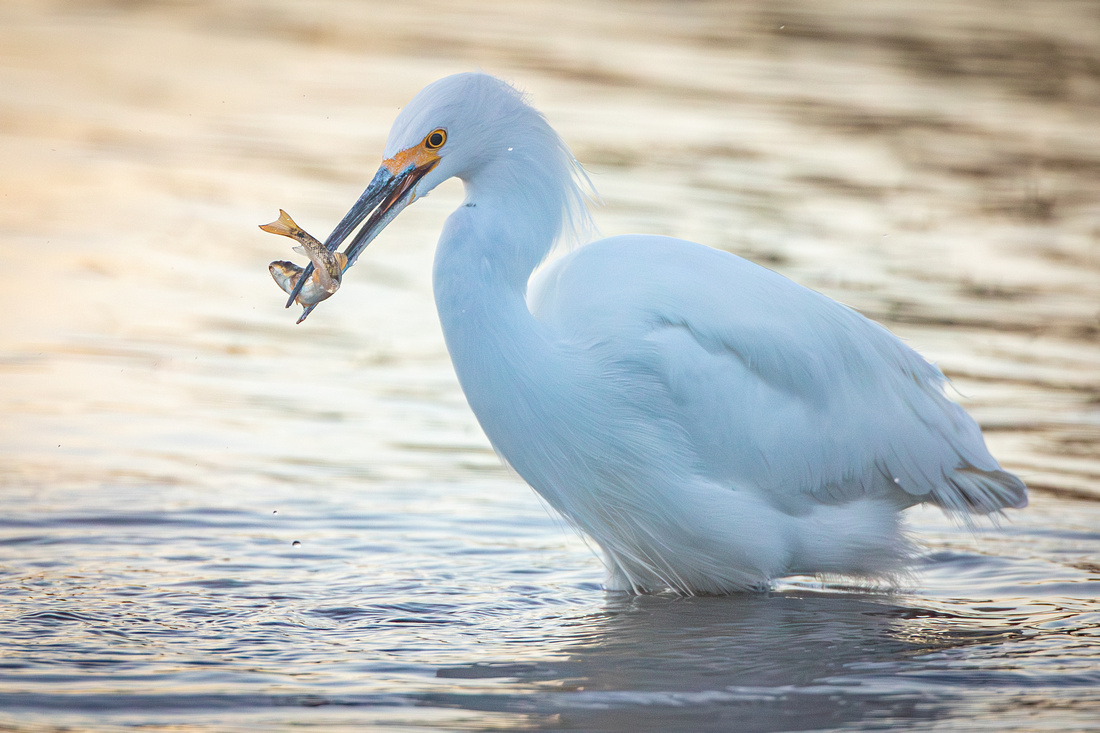 Snowy Egret with fish Snowy Egret with fish
There was a Snowy Egret near my home that I observed nearly every morning during autumn and winter. He became so familiar with my presence that he often hunted within a few feet of me. He was very focused, dedicated, and successful in his pursuit of the small fry that were hatching and growing in the shallows of the salmon habitat. One of the tricks used by Egrets to stir up prey is to gently wiggle their foot in the water then lunge headfirst to capture whatever swims out.
Photo Tip: Egrets like to hunt in the shallows. If you position yourself in an area where they have been spotted (check ebird) before they show up, you have a good chance of seeing them hunt. It's also helpful to get down low to get eye to eye shots.
|
This is just a small sample of the wildlife that rely on fish as a part of their diet. Fish are high protein and nutrients so it's no surprise that so many wildlife species have evolved and perfected the art of fishing. Because of this, fish play a vital role in many ecosystems, and their consumption by a wide range of species is evidence of the relationships that exist in the natural world.









